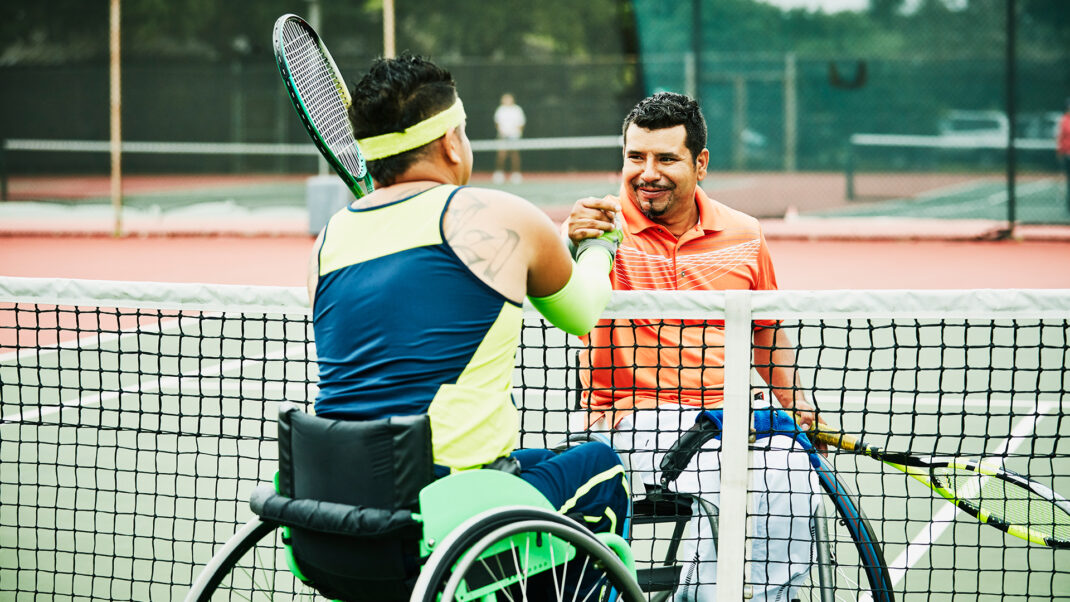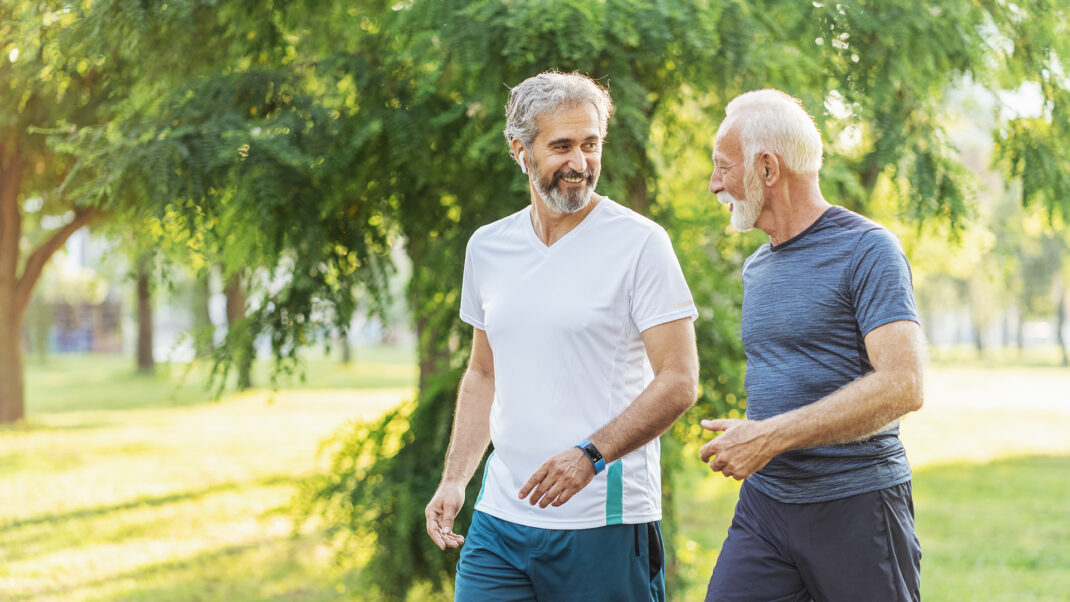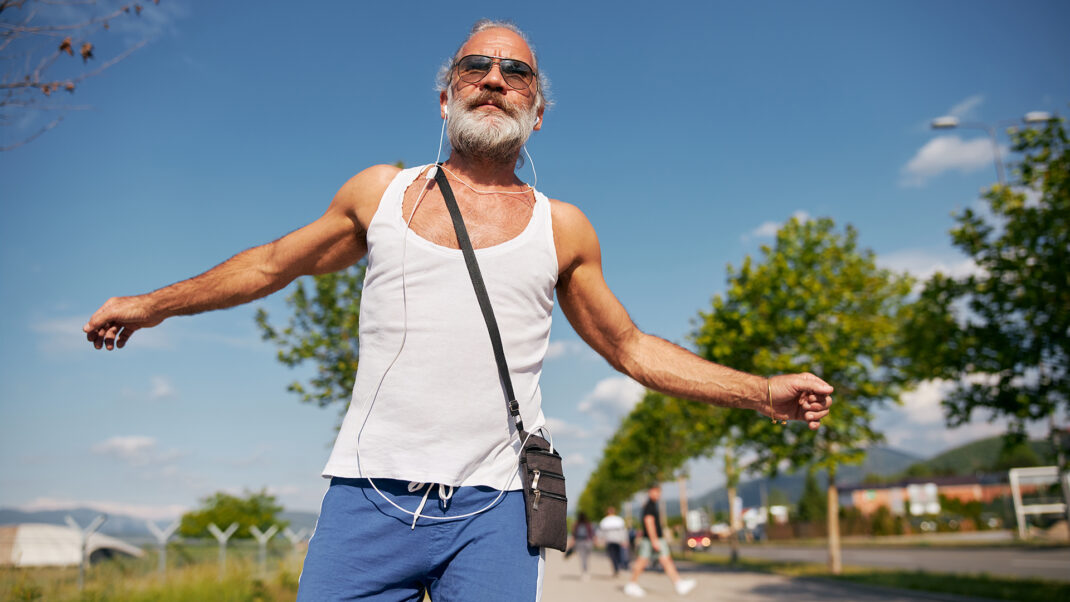Three Ways to Welcome Seniors
As demand for senior fitness programs grows, rethink how you organize and prioritize exercise goals for an expanding demographic.
Older adult, senior and mature are terms used to describe an age range of individuals who are now a force in the fitness community. A growing number of businesses and organizations currently cater to this demographic, and the fitness industry is no different with its specialized instruction. Programming increasingly reflects the trend. As a group exercise instructor, you have the job of delivering great programs and class ideas targeted to older members.
So what do you do after being tapped on the shoulder to “go teach seniors”? If you’ve never taught this group, the first few classes may not go as smoothly as you would like. If your first experiences include follow-up comments regarding how the music was too loud or not the right kind, the room was too cold and the ladies’ locker room less than tidy, you may join many others in thinking that older adults are difficult to please and/or dislike change.
However, consider this feedback a gift. Many seasoned instructors will attest that older-adult criticism often reflects their own inability to lead and communicate effectively. In many cases, time-tested teaching methods are not enough to satisfy the expectations of older-adult exercisers—it takes a little more listening, some careful questioning and a commitment to design better approaches. The good news: it’s definitely possible to increase physical activity for health and well-being while promoting social interaction and fun. One way to approach older-adult instruction is to work on communication, programming and retention, or “CPR” for short. Let’s take a look at how learning this type of CPR can bolster your ability to teach aging participants safely and effectively.
Communication
Communication is both verbal and nonverbal. How you say and demonstrate the “what” can make the difference between your students’ following you immediately and your having to take time away from the workout to make corrections.
To be a successful verbal communicator, follow these guidelines:
- Be specific and concise, create a visual image and enunciate. Rather than say, “Lift it up, overhead—not too high so as not to injure your shoulder,” say “Right arm up, close to your ear.”
- Use universal language. Regardless of the skill range in a group exercise class, you can create a feeling of safety and success for all by cuing, “Lift your left knee up four times; left knee up, higher.” “Reach across your body; reach farther.” “Make a fist; open your fingers. Make a hard fist; open your fingers wider.” With each of these directives, the individual’s perception is that she is being challenged by demonstrating more effort within her own ability.
For high-end, nonverbal communication, try the following tips:
- Play your music smartly and strategically. Use the 8-count to (nonverbally) match your verbal cues for a change in movement.
- Teach from a standing position and face the class. Mirror participants’ movements, and move slowly along the front of the group while turning diagonally or to the side so people can see your body’s form and technique.
Lessons learned about verbal and nonverbal communication:
- Older adults have hearing and vision challenges. Avoid “filler” words (it, that and take mean nothing). Echo cues (two or three rapid repetitions of the same cue) create confusion. Also, chatty conversations about topics unrelated to the workout are difficult to filter out from meaningful cues.
- Often, the first word of a cue is not heard, so construct your cues carefully. For example, beware of using the word don’t in front of a directive: “Don’t hold your breath” or “Don’t let your knees go over your toes,” etc. If you omit the word don’t in the above statements, you’ll understand why students sometimes perform exactly the opposite of what you intend them to do.
- You want to be a positive role model for all to see and hear. With this in mind, perform the exercises in clear view. You will help participants feel successful and inspire them to tackle new choreography; exercise progression challenges; and balance, coordination and agility movements.
Programming
Physical activity programming for older adults may or may not be in the realm
of your authority as an instructor. Your fitness facility may need to realign its
programming guidelines (including marketing plan and goals) depending on participants’ skills and abilities. However, you do have immediate control over how you teach progressions. The following guidelines offer some progression principles for working with seniors:
- Look at students’ walking patterns, gait and posture. This assessment skill will help you decide what amounts of cardiovascular, strength, balance and flexibility training are right for your students (see the sidebar “A Watchful Eye”).
- Listen when participants share their health issues and challenges with you. Carefully follow physician directives for diseases and disabilities.
- Base programming decisions on students’ skills and abilities. Focus on what participants can do rather than what you think they can or should do. Exercise selection is the most important decision you will make, and each day is different. Prepare an exercise inventory that ranges from easy to difficult, to meet different needs.
- Have a clear understanding of risk-versus-benefit issues for exercise progression in a group setting. This will help you address safety concerns while avoiding moves that are contraindicated for older adults. Begin with a base move combination, and change one element at a time. Think through the exercise you want to teach: a wall push-up might seem a great idea, since participants would not have to go to the floor and could maintain good spinal alignment. However, the stress to the wrists when hyperextended against the wall would be risky.
- Design multiplanar progressions for the entire body: top/bottom, both sides and front/back. Remember to include and consider the weaker, nondominant side, as well as muscle balance principles.
Lessons learned about programming exercise progressions:
- Beware of assumptions! The little old lady in the back of the room may be more skilled and in better health than the fit-looking gentleman in the front row.
- Consider the needs of your “cast of characters.” New students are very wary and need encouragement. Experienced students are learning how to connect with a new lifestyle and need you to be their cheerleader. Elite class members need more technical information and appreciate understanding the “why” of an exercise.
- Be flexible and use good judgment. Choose exercises and resistance tools wisely. If most of your class cannot stand and exercise, use chairs. Create safe, seated options, while offering a standing position for others.
- Seek current practical and academic opportunities to learn more about the full range of exercise recommendations for older adults.
- Trust your participants’ information. Older adults are experts on what is ailing them. They are often frank and are unlikely to appreciate being reminded about the doom-and-gloom characteristics of their chronic conditions.
Retention
In addition to improving communication and having a plan for programming exercise progressions, you need to develop retention strategies—the “R” in CPR—to address the various types of change that older adults will encounter. If you want to transform yourself from a good instructor into a great one, you must prepare for succession, evaluate participants’ skills and abilities and initiate better cross-functional consensus within your fitness facility.
Think carefully about the following points:
- Plan for substitution. Who will lead your class when you take time off? Succession planning is the responsibility of every instructor. Identify co-workers and share with them what you’ve learned about teaching older adults. Be a mentor to your substitutes and introduce them to participants prior to a transition.
- Offer fitness evaluations, giving measurable feedback on performance and on physical changes in strength and flexibility. Older adults like to know how they compare with others in their age group, and enjoy the excitement of setting fitness goals.
- Participate in a cross-functional team that includes the front-desk staff, the facility manager, personal trainers and yourself. This alliance will engender a clear understanding of the bigger goals and objectives of the business and lead to a unified approach for sending messages to older adults. Most staff and scheduling changes occur three times per year (January, June and September). Communication across departments
is essential in helping older adults accept the changes with continued trust and loyalty.
Lessons learned about the importance of retention:
- A properly introduced instructor who succeeds another or is identified as a permanent substitute will be appreciated for his or her unique qualities.
- Preparing for a change prior to the change is essential for compliance and cooperation; tell the truth.
- An integrated fitness center staff resonates well with older adults who need support and reassurance when beginning a physical activity program. Walking into a fitness center is not a random event. Older adults who enter your facility have a reason for doing so, and a collaborative team can provide better customer service than you can provide on your own.
Opening Doors
By taking a look at what your relationship is to CPR—communication, programming and retention—you may discover other methods that will help you increase the safety and effectiveness of your older-adult group classes. While you might not be able to develop these three improvements simultaneously, you can expect positive comments about your “new,” more open approach to delivering information and teaching directives.
If a participant comes in looking at the floor for foot placement, walking with a wide stance and not picking up his feet, he is probably unsure of his balance and will depend on your expertise to help him improve this skill. A quick “landscape view” of your class and their collective posture patterns will guide you in choosing a combination of strength exercises and stretches that will improve spinal misalignments common in older adults.
Deborah Redder
Deborah Redder is the creator of the nationally-recognized and award-winning SilverSneakers® group exercise program where she oversees the direction of instructor training, curriculum development and continuing education. Deborah holds degrees in health, physical education and exercise science. She is the former judiciary chair and technical director for Aerobic Gymnastics, USGA and has been a presenter, continuing education provider and lecturer since 1989.





